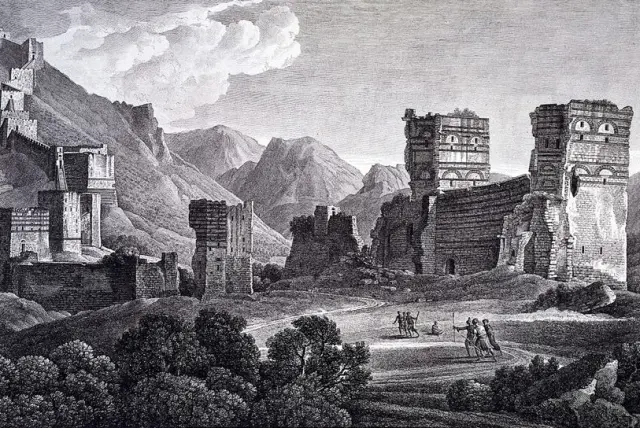By: Bryan Li
Earlier this year, Archaeologists uncovered several roman chambers and offering vessels mad of clay dated to the late Roman era while excavating Antakya, once Antioch, the capital of Turkey’s Hatay Province. The crew of twelve began excavating around the Church of St. Pierre on October 10th.
Ayse Ersoy, head of the Hatay Archaeology Museum, thinks that people on pilgrimage during the late Roman era would visit church with their offering vessels, filling these clay pots with holy water. The vessels themselves look like large clay beakers with handles. Any color they might have had has been lost to time.
The church was dedicated to St. Pierre, the founder of the Antakya Church, the archpriest of the first community of Christians, and the world’s first Pope. In fact, tradition and biblical passages say that St. Pierre was an apostle of Jesus himself and chose to establish the church in. As a major pilgrimage site, the church contributed much to the development of early Christian faith. The church is one of the oldest in the world, dating to around the 4th century. Despite it’s importance, the church itself is compact, only 9.5 meters wide, 13 long, and 7 high, and it contains floor mosaics, frescoes, and an altar. The cave with the offering vessels is believed to have been owned by evangelist and Gospel writer St. Luke.
Around 300 BC, Seleucus founded the city, which would become part of the Seleucid empire, a Greek state in the Hellenistic period. Romans soon became extremely wealthy and influential here, and hence Christianity was brought to the city. The word “Christian”, meaning those who followed Jesus Christ, was coined in Antioch, the “cradle of Christianity”, according to Christian circles. Antioch also served as home to many influential Christian people, such as St. Ignatius.
More excavating and study of the area is needed to understand the scope of the site’s influence, and the secrets buried in its past.











